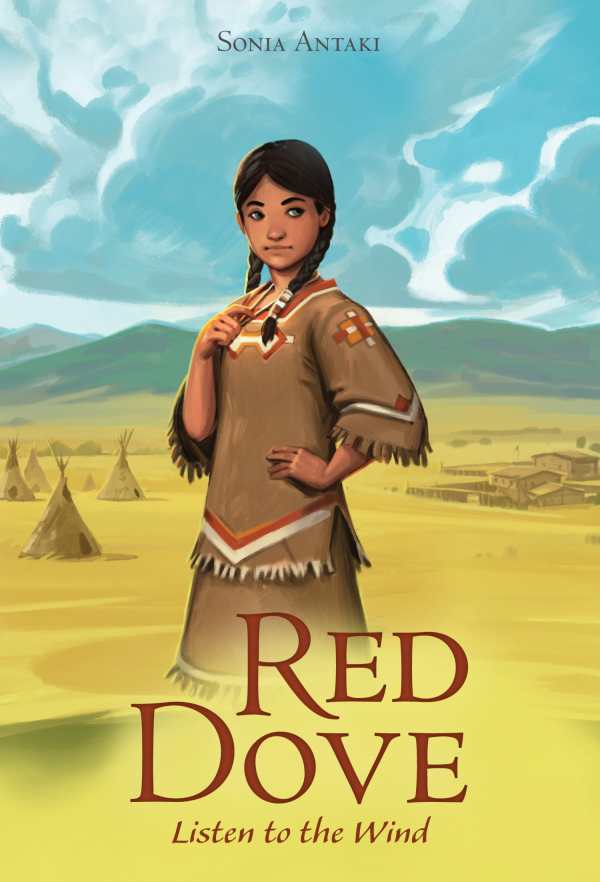It looks like you've stumbled upon a page meant to be read by our code instead of viewed directly. You're probably looking for this page.
Red Dove, Listen to the Wind
- 2019 INDIES Finalist
- Finalist, Juvenile Fiction (Children's)
Red Dove is the adolescent heroine of this thoughtful historical novel for middle grade readers set in the Dakota Territory in 1890-91. She is the daughter of a white settler and a Lakota Sioux mother, though she and her half-brother Walks Alone live with their mother and clan. Times are hard for the Lakota now that buffalo and other game are scarce, and they face starvation if they can’t obtain more food for the long winter ahead.
Rebuffed and attacked in the nearby market town when they bring beaded items for trade, Red Dove and her mother walk back to their village hungry. There, Red Dove stealthily eats forbidden fruit from a plum tree sheltering the grave of a fallen warrior. This act gives her guilt-ridden dreams and convinces her family to send Red Dove and Walks Alone away to a missionary-run boarding school, where they face many challenges, from harsh punishments to obliteration of their traditional dress, language, and customs.
Characters from many backgrounds, including nuns, Lakota ghost dancers, Irish American soldiers, pioneer orphans, and schoolteachers introduce a variety of stories about the settlement of the American West. References to the Battle of the Little Bighorn (Battle of the Greasy Grass) and the massacre at Wounded Knee also shed light on these historical events from both Washichu (white) and Native American perspectives, and offer launching points for further discussion and research. (The ugly, un-Wonderful vitriol of Oz author L. Frank Baum is one such eye-opener.) Author Sonia Antaki does not shy away from depicting scenes of brutality and violence, but she also shows how some characters develop their bigotry from their own experiences with cruelty.
Antaki mixes in elements of Native American mythology and spirituality in this otherwise straightforward retelling of the clash of cultures. While away at school, Red Dove receives guidance from visions of her beloved grandfather and is also able to perceive events through others’ eyes by touching her opahte (a pouch containing her dried umbilical cord). Frequent use of Lakota vocabulary, defined in a rear glossary, also effectively situates Red Dove’s heritage in the story.
There is deep meaning tucked into Red Dove’s story of transformation. As she navigates her trying adolescence and life away from her family, she also learns what it means to truly “travel between worlds,” how to deeply listen to and develop empathy for others, and how to advocate for greater justice for her community. When Red Dove chafes against the gender restrictions of her own culture (“You’re not supposed to hunt. It’s not our way.”), Antaki also touches on the question of whether longstanding customs and ideas should be reevaluated among traditional societies.
Red Dove is as full of ideas as it is of action. It is a lively, sensitive portrayal of a young woman who traverses cultures at a pivotal time in history.
Reviewed by
Rachel Jagareski
Disclosure: This article is not an endorsement, but a review. The publisher of this book provided free copies of the book and paid a small fee to have their book reviewed by a professional reviewer. Foreword Reviews and Clarion Reviews make no guarantee that the publisher will receive a positive review. Foreword Magazine, Inc. is disclosing this in accordance with the Federal Trade Commission’s 16 CFR, Part 255.
